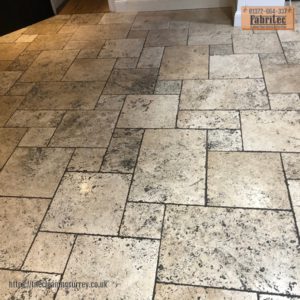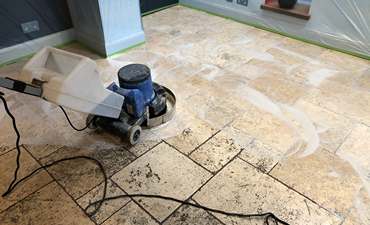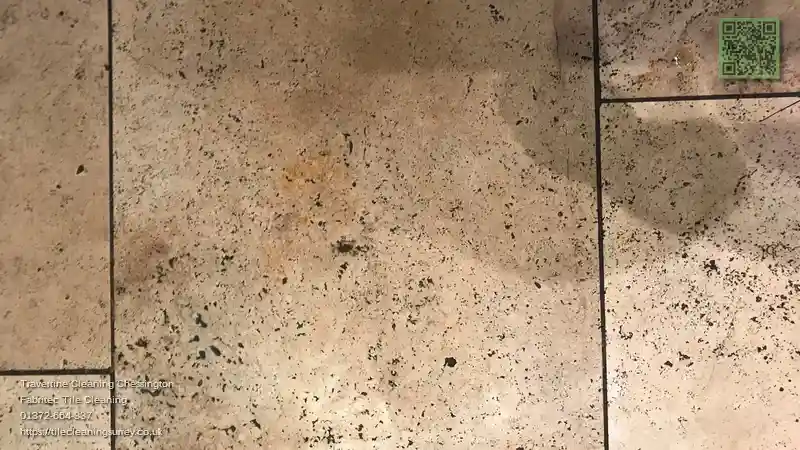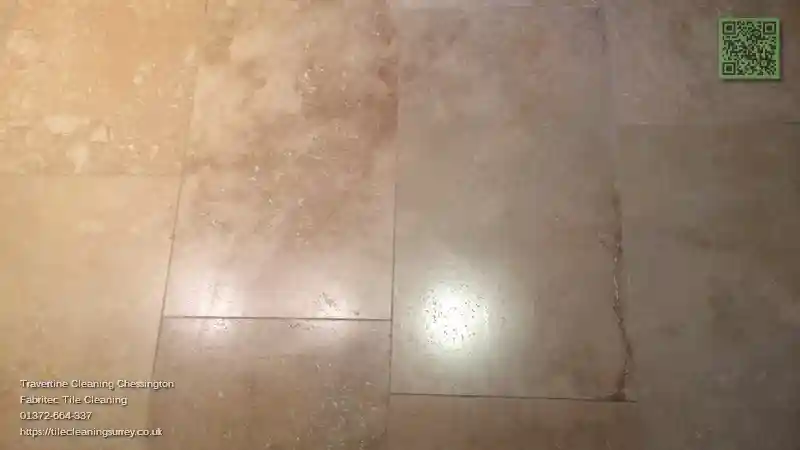Ultimate Guide to Restoring the Beauty of Your Travertine Floors
Travertine floors are celebrated for their stunning beauty and classic appeal, making them a favored option among homeowners seeking elegance. However, the inherent porosity of travertine can lead to challenges such as dirt buildup, unsightly stains, and a decline in shine over time. Standard cleaning methods may not be sufficient, leading homeowners to ponder several crucial questions:
- What practical techniques can I utilize to revive the natural shine of my travertine floors?
- Which cleaning products are best suited for the upkeep of travertine surfaces?
- How do expert cleaning services ensure the safe maintenance of travertine without causing harm?
- Is it essential to seal my travertine flooring, and how often should this be performed?
If maintaining the pristine condition of your travertine surfaces proves to be a daunting task, seeking professional assistance could be the most effective solution. At Fabritec Tile Cleaning, we specialize in revitalizing travertine floors to restore their original splendor. Below, we delve into our comprehensive professional cleaning process and share invaluable tips that will enable you to care for your travertine floors effectively and efficiently.
Grasping the Specialized Care Requirements of Travertine
Travertine is a unique type of limestone that develops small voids and cavities during its natural formation. While these characteristics enhance the stone's distinctive appeal, they also contribute to its high absorbency. This trait requires special attention and care to preserve the stone's aesthetic and prolong its lifespan.
Recognizing Common Issues Faced by Travertine Floors
- Dirt and grime accumulation: The porous nature of travertine allows for dust and debris to become trapped within its surface, resulting in a dirty appearance.
- Etching and loss of shine: Exposure to acidic substances, including lemon juice or vinegar, can cause surface damage that dulls the stone’s finish.
- Cracking and chipping: High foot traffic or prolonged exposure to moisture can weaken the stone, resulting in cracks.
- Mold and mildew proliferation: Areas like bathrooms, kitchens, and outdoor pavers are particularly susceptible to moisture issues, encouraging mold and mildew growth.
Using improper cleaning methods can aggravate these challenges, making professional deep cleaning and sealing essential for the upkeep of your travertine floors.
Step-by-Step Approach to Professional Travertine Cleaning

At Fabritec Tile Cleaning, we follow a meticulous, multi-step process to effectively restore the allure of travertine surfaces.
1. Detailed Assessment and Inspection of the Travertine Surface
The journey towards professional cleaning starts with a thorough examination of the travertine surface. Our team assesses:
 Stains and discoloration
Stains and discoloration Cracks, chips, or missing grout
Cracks, chips, or missing grout Areas with significant dirt buildup
Areas with significant dirt buildup Signs of moisture damage or mold presence
Signs of moisture damage or mold presence
This initial evaluation allows us to formulate the most effective cleaning strategy tailored specifically to the unique conditions of your flooring.
2. Utilizing pH-Neutral Cleaning Solutions as Pre-Treatment
Before commencing the deep cleaning process, we apply a specially formulated pH-neutral stone cleaner. Unlike conventional floor cleaners, this solution is designed to dissolve dirt and stains without causing harm to the stone.
Benefits of Choosing pH-Neutral Cleaners:
- They protect against etching and loss of shine.
- They penetrate thoroughly into the pores to effectively lift dirt.
- They leave no harmful chemical residues behind.
3. Advanced Deep Cleaning Using High-Performance Equipment

Once the cleaner has effectively loosened dirt and grime, we utilize rotary scrubbing machines fitted with soft-bristle brushes to extract embedded debris. These state-of-the-art machines:
 Safely remove deep-seated grime without scratching the stone surface.
Safely remove deep-seated grime without scratching the stone surface. Access the stone’s pores for a more thorough clean.
Access the stone’s pores for a more thorough clean. Ensure uniform cleaning across the entire floor's surface.
Ensure uniform cleaning across the entire floor's surface.
For intricate areas or delicate surfaces, we apply hand scrubbing techniques to prevent any potential damage.
4. Customized Stain Removal Approaches for Specific Stains
In instances of stubborn stains, we implement specialized stain-removal techniques tailored to the specific type of stain.
Expert Methods for Stain Extraction from Travertine
- Organic stains (such as food, coffee, or tea): Treated with hydrogen peroxide-based poultices for effective extraction.
- Oil-based stains (like grease or cosmetics): Absorbed using a baking soda paste for optimal removal.
- Rust stains: Removed with specialized rust removers formulated specifically for natural stone.
- Water spots and mineral deposits: Dissolved with a gentle, stone-safe descaler to avoid damage.
5. Comprehensive Cleaning and Restoration of Grout Lines
Unsightly grout can detract from the overall look of even the most pristine travertine floor. We utilize steam cleaning techniques alongside professional-grade grout brushes to eliminate embedded grime from the grout lines.
In cases where grout is cracked or missing, we perform grout repair and recoloring to restore a consistent and appealing appearance.
6. Rinsing and Removal of Residual Cleaning Agents
After the cleaning process is finalized, we thoroughly rinse the entire surface using high-pressure water to eliminate any residual cleaning agents or loosened dirt. A wet vacuum aids in extracting excess moisture, ensuring a quick drying time.
7. Professional Repair of Cracks, Holes, and Surface Imperfections

The porous characteristics of travertine make it prone to minor holes and cracks. If left unchecked, these imperfections can trap dirt and deteriorate further over time.
We employ stone-specific fillers to expertly repair:
- Small pits and holes
- Hairline cracks
- Chipped edges
This vital step not only enhances the visual appeal of the stone but also extends its overall lifespan, ensuring your investment is well-protected.
8. Application of a High-Quality Sealant for Lasting Protection
Sealing is a crucial step in preserving the beauty of travertine and preventing future damage. Once cleaning and repairs are complete, we apply a premium quality stone sealer to fortify the surface.
Overview of Different Types of Travertine Sealers
- Penetrating Sealer: Absorbs into the stone without altering its appearance, making it ideal for both polished and natural travertine.
- Surface Sealer: Creates a protective barrier on the stone’s surface, best suited for honed or filled travertine.
9. Conducting a Final Walkthrough and Quality Assurance Check
Before concluding our service, we perform a thorough walkthrough to confirm that every aspect of the floor has been cleaned, repaired, and sealed to perfection. Additionally, we provide homeowners with personalized maintenance recommendations to ensure their travertine remains in outstanding condition.
Benefits of Choosing Professional Travertine Cleaning Services

While cleaning your travertine floors independently may seem like a cost-effective option, the long-term advantages of utilizing professional cleaning services far outweigh those temporary fixes.
Reasons to Opt for Professional Cleaning Services
 Deep cleaning that addresses more than just surface dirt.
Deep cleaning that addresses more than just surface dirt. Prevention of etching and damage caused by harsh cleaning agents.
Prevention of etching and damage caused by harsh cleaning agents. Sealing that prolongs the lifespan of the stone.
Sealing that prolongs the lifespan of the stone. Time-saving and hassle-free service from trained professionals.
Time-saving and hassle-free service from trained professionals.
Engaging a professional cleaning service every 12-24 months will keep your travertine looking its best while preventing costly long-term deterioration.
Key Maintenance Strategies for Homeowners with Travertine Flooring
To maintain your travertine floors in optimal condition between professional cleanings, adhere to these best practices:
- Utilize Proper Cleaning Tools: Use soft microfiber mops to prevent scratches and pH-neutral stone cleaners to protect the surface. Avoid abrasive scrubbers that can wear down the stone.
- Promptly Address Spills: Given that travertine absorbs liquids quickly, it is essential to wipe up spills immediately to avert potential staining.
- Steer Clear of Acidic and Harsh Cleaning Products: Never use vinegar, lemon juice, or ammonia-based cleaners, as these can result in etching and damage.
- Regular Dusting and Sweeping: Dust and sand particles can scratch the travertine surface. Consistent sweeping or vacuuming will minimize buildup and help maintain its beauty.
- Reapply Sealer Annually: To ensure ongoing protection against stains and moisture, it’s recommended to re-seal your travertine every 12-24 months.
Revitalize Your Travertine Floors with Expert Care
Travertine floors represent a significant investment that requires specialized cleaning and maintenance for optimal longevity. At Fabritec Tile Cleaning, we employ advanced techniques, effective stain removal strategies, and high-quality sealers to restore your travertine to its original condition.
If you reside in the New Malden area and are in need of expert travertine cleaning services, do not hesitate to call 01372-664-337 or visit our website for further information. Let us help you rejuvenate your travertine floors and restore their original brilliance!
This informative post was provided by the professionals at https://tilecleaning surrey.co.uk/hounslow/travertine-cleaning.html. on behalf of Fabritec Tile Cleaning In New Malden
The Article How Professionals Clean Travertine: Expert Tips and Insights from Fabritec Tile Cleaning appeared first on https://fabritec.org
The Article Expert Tips for Cleaning Travertine from Fabritec Tile Cleaning Was Found On https://limitsofstrategy.com


I appreciate how you’ve highlighted the unique beauty of travertine floors along with the challenges they present. Having installed travertine in my own home, I completely understand the struggle with stains and maintaining that polished look. I’ve found that using a pH-neutral cleaner specifically made for stone really helps, along with a bit of elbow grease!
It’s great to hear about your experience with travertine floors. There’s definitely something captivating about their natural beauty and the way they add an earthy elegance to a space. Your point about the upkeep is spot on. It’s a balancing act, isn’t it? You want to enjoy that polished look without constantly worrying about stains or scratches.
Your post highlights some important considerations for maintaining travertine floors, which can indeed be both a stunning and challenging choice for many homeowners. In my experience, one of the most effective techniques for restoring the natural shine is using a mix of warm water with a few drops of pH-neutral dish soap. This method gently cleans the surface without damaging the stone. I’ve also found that using a microfiber mop can help pick up dirt and debris without scratching the surface.